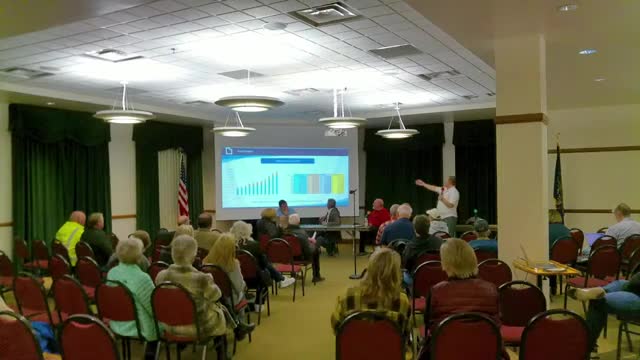Homeowners face tax burden as property values soar
November 09, 2024 | Iron County Commission, Iron County Boards and Commissions, Iron County, Utah
This article was created by AI summarizing key points discussed. AI makes mistakes, so for full details and context, please refer to the video of the full meeting. Please report any errors so we can fix them. Report an error »

In a recent government meeting, officials discussed significant shifts in property values and tax implications affecting homeowners and centrally assessed properties. Home values in the area have surged from $2.4 billion to $7.5 billion, while utility values have increased from $384 billion to $418 billion. This rise in home values has resulted in a substantial increase in tax revenue for local schools and the county, although the distribution of these funds has raised concerns among residents.
The meeting highlighted a notable change in the tax burden, with residential properties now accounting for 67% of total taxes, up from 54% in 2013. In 2023 alone, centrally assessed properties contributed $1.67 million less in taxes compared to the previous year, a shortfall that homeowners have had to cover.
Officials also addressed a five-year period during which the state of Utah imposed a fixed property tax rate for schools, despite rising property values. This freeze on the tax rate meant that homeowners faced higher tax bills without a corresponding decrease in rates, leading to increased financial pressure on residents.
The discussions underscored the complexities of property tax assessments and the impact of state policies on local taxation, raising questions about fairness and the distribution of tax burdens among different property types. As the meeting concluded, officials encouraged further dialogue on these pressing issues to ensure equitable tax practices moving forward.
The meeting highlighted a notable change in the tax burden, with residential properties now accounting for 67% of total taxes, up from 54% in 2013. In 2023 alone, centrally assessed properties contributed $1.67 million less in taxes compared to the previous year, a shortfall that homeowners have had to cover.
Officials also addressed a five-year period during which the state of Utah imposed a fixed property tax rate for schools, despite rising property values. This freeze on the tax rate meant that homeowners faced higher tax bills without a corresponding decrease in rates, leading to increased financial pressure on residents.
The discussions underscored the complexities of property tax assessments and the impact of state policies on local taxation, raising questions about fairness and the distribution of tax burdens among different property types. As the meeting concluded, officials encouraged further dialogue on these pressing issues to ensure equitable tax practices moving forward.
View full meeting
This article is based on a recent meeting—watch the full video and explore the complete transcript for deeper insights into the discussion.
View full meeting

